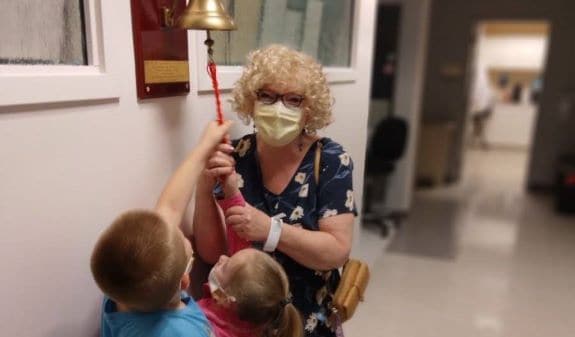During the past year, you may have heard a report of concerns over plastics, cosmetics, body care products or deodorants and risk of breast cancer. Whether the media source is the evening news or the Internet, it can be hard to know whether any of these products are likely to pose a health risk. Looking at the overall scientific evidence helps put things into perspective.
Bisphenol A (BPA)
Bisphenol A (BPA) is a chemical found in some plastics and some coatings on metals. Concerns about BPA have centered on its use in plastic and metal food and beverage containers. Small amounts of BPA from the containers can get into the foods and beverages inside. As a result, we can be exposed to low levels of BPA.
Ever since BPA was first used in food and beverage containers, the low levels of BPA exposure were deemed safe. And, these low levels of exposure still appear to be safe for adults.1 Findings from laboratory studies have found that BPA can affect hormone levels in animals, although these hormone changes have not been linked to any harmful effects.2 And, at this time, there is no evidence to suggest a link between BPA and risk of breast cancer.
However, in January 2010, the U.S. Food and Drug Administration (FDA) announced that it will conduct further studies to look at the health effects of BPA in infants.3 There is more concern about health risks to infants from BPA because they are exposed to higher levels of BPA than adults from the use of plastic baby bottles and feeding cups.
Parabens
Parabens are a group of chemicals often used as preservatives in cosmetics and body care products such as lotions and hair care products. (Most deodorants and antiperspirants do not contain parabens.) Parabens have been shown to have very weak estrogen activity.4 And, animal studies have found some health effects of parabens, but only in very large doses.4
In 2008, the Cosmetics Ingredient Review Expert Panel, which conducts research on product safety for the FDA, concluded that paraben exposure from cosmetics and body care products was safe.4 The Panel found the estrogen effects from parabens are so weak that it is highly unlikely they can be harmful to health, especially in the small amounts used in cosmetics and body care products.4 In addition, the Panel noted parabens do not build up in the body over time and therefore are unlikely to cause harm.
Limitations of findings from animal studies
Dr. Melissa Bondy, an epidemiologist at the University of Texas MD Anderson Cancer Center believes it is quite difficult to get reliable data on environmental exposures because of the ubiquitous and multiple exposures that can help us understand the risks associated with breast cancer. “It is all so speculative because we just don’t have enough data from human studies at this point in time to make definitive recommendations one way or the other. Although animal studies are useful, we can’t completely extrapolate findings directly from animal studies to humans.” Animal studies can lay the groundwork for human research, but in order to draw conclusions for people, we need randomized clinical trials. Unfortunately, for many environmental exposures, such as BPA or parabens, we cannot do a randomized clinical trial. For example, it is not appropriate to assign a person in a research study to high levels of BPA. So, we look to animal studies for guidance and we rely on observational human studies, such as cohort and case-control studies, to draw conclusions.
Deodorants and antiperspirants
Similar to concerns about BPA- and paraben-containing products, there have been reports of concern that chemicals found in deodorants and antiperspirants could penetrate the skin of the underarm and cause harm. Although there have only been a few studies looking at use of these products and breast cancer risk, the research to date doesn’t support a link between the two. The largest study, which included more than 800 women with breast cancer, showed no increase in risk from use of either deodorant or antiperspirant.5 It also showed no increase in risk among women who shaved with a razor prior to applying deodorant or antiperspirant.5 Given these data and the lack of a biologic mechanism, it does not appear likely that use of these products increases the risk of breast cancer.
Current scientific data do not support a link between plastics, paraben-containing cosmetics or body care products, deodorants or antiperspirants and breast cancer. Although BPA does not appear to be related to harmful health effects in adults (including breast cancer), new studies are examining the safety of BPA exposure in infants.
Looking to the future
Given the many unanswered questions about environmental exposures and breast cancer, Susan G Komen for the Cure® has commissioned the Institute of Medicine (IOM) to conduct a comprehensive review of breast cancer research on the environment. The IOM will also make recommendations for further avenues of research. According to Dr. Eric P. Winer, chief scientific advisor to Komen for the Cure, the work being conducted by the Institute of Medicine will be enormously informative to the breast cancer community and it will also guide Komen’s strategic initiatives on environmental research during the next five years.
Find more information from the FDA on lowering your child’s exposure to BPA.
Find more information from the FDA on the safety of products containing parabens.
Find more information on different types of research studies.
References
1. Center for The Evaluation of Risks To Human Reproduction. NTP-CERHR Monograph on the potential human reproductive and development effects of bisphenol A. National Toxicology Program and U.S. Department of Health and Human Services. NIH Publication No. 08–5994. Research Triangle Park, NC. http://ntp.niehs.nih.gov/ntp/ohat/bisphenol/bisphenol.pdf, 2008.
2. European Food Safety Authority. Opinion of the Scientific Panel on food additives, flavourings, processing aids and materials in contact with food (AFC) related to 2,2-BIS(4-HYDROXYPHENYL)PROPANE. http://www.efsa.europa.eu/, 2006.
3. U.S. Food and Drug Administration. Update on bisphenol A for use in food contact applications. http://www.fda.gov/NewsEvents/PublicHealthFocus/ucm064437.htm, 2010.
4. Cosmetic Ingredient Review Expert Panel. Final amended report on the safety assessment of Methylparaben, Ethylparaben, Propylparaben, Isopropylparaben, Butylparaben, Isobutylparaben, and Benzylparaben as used in cosmetic products. Int J Toxicol. 27 Suppl 4:1-82, 2008.
5. Mirick DK, Davis S and Thomas DB. Antiperspirant use and the risk of breast cancer. J Natl Cancer Inst. 94:1578-80, 2002.



